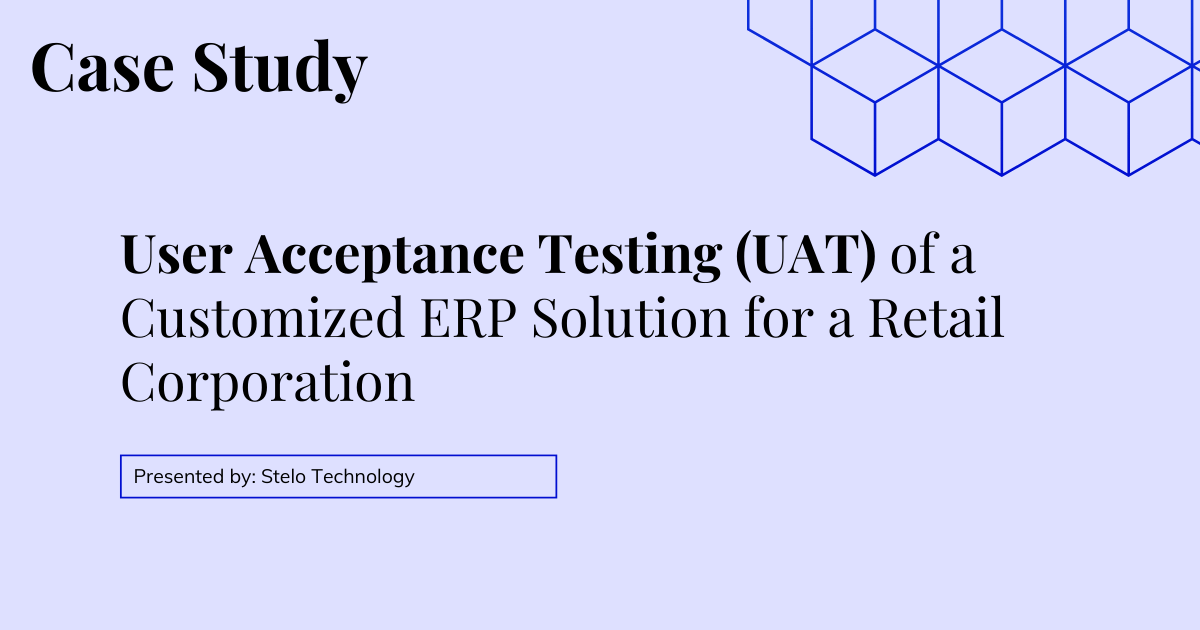The primary goal of the User Acceptance Testing (UAT) was to validate that the customized Enterprise Resource Planning (ERP) solution aligns with the end-users’ needs and expectations. This validation was critical to ensure smooth full-scale deployment and to facilitate a seamless transition for the retail corporation from their legacy systems. Read the below UAT for Retail ERP Case Study –
Scope:
The scope of the UAT encompassed comprehensive testing with key stakeholders and end-users to collect actionable feedback and confirm system readiness. The stakeholders included department heads, IT staff, and frontline users who would be interacting with the ERP system daily.
Challenges for UAT for Retail ERP:

- Resistance to Change: Many end-users were accustomed to the legacy systems and were initially resistant to adopting the new ERP solution. This resistance was rooted in unfamiliarity with the new system’s interface and workflows.
- Complex Integration Needs: The ERP solution needed to integrate seamlessly with existing systems, including inventory management, supply chain logistics, and customer relationship management, which presented technical challenges.
- Diverse User Requirements: Different departments had varying needs and expectations from the ERP system, which made it challenging to configure a one-size-fits-all solution.
- Training and Support: Providing effective training and support to all users to ensure they were comfortable with the system by the end of the UAT phase.
Key Activities:
- Development of UAT Plans: Detailed UAT plans were created, outlining specific test cases that reflected real-world use of the ERP system across various departments.
- Coordination with User Groups: Regular workshops and meetings were held to engage with different user groups, ensuring their requirements and concerns were understood and addressed.
- Execution of Test Scenarios: Test scenarios were executed, which included daily tasks and processes that the users would routinely perform. This helped in identifying any issues that could hinder their operations.
- Collection of Feedback: Feedback was systematically collected through surveys, interviews, and observation of user interactions with the system.
- Management of Iterative Improvements: Based on the feedback, the ERP system underwent iterative refinements to better align with user expectations and operational needs.
Ready to enhance your software quality and accelerate your time to market? Contact us today at sales@stelotechnology.com to request a customized quote for your business!
Solutions Implemented:
- Customized Training Programs: Tailored training sessions were developed to help users become proficient with the new system. This included hands-on sessions and quick-reference guides.
- Enhanced Communication: Established a clear communication channel that allowed users to easily report issues and obtain support during the UAT phase.
- User-Centric Design Tweaks: Adjustments were made to the ERP interface and workflows to make them more intuitive and user-friendly based on direct feedback from the users.
- Staged Rollouts: Introduced the ERP system in phases, which allowed gradual adaptation and minimized disruption to daily operations.
Outcomes:
- Enhanced User Satisfaction: As a result of proactive engagement and responsive changes, user satisfaction significantly improved by the end of the UAT.
- Successful System Adoption: The phased introduction and thorough testing ensured a higher rate of adoption across the corporation.
- Reduction in Post-Deployment Issues: With most issues identified and resolved during the UAT, the number of problems encountered after deployment was substantially lower, ensuring smoother operations.
- Feedback-Driven Improvements: The feedback loop established during UAT led to continuous improvements in the system, even post-deployment.
This UAT case study underscores the importance of involving end-users in the testing phase of system implementation, ensuring the solution not only meets technical specifications but also user needs and expectations.


